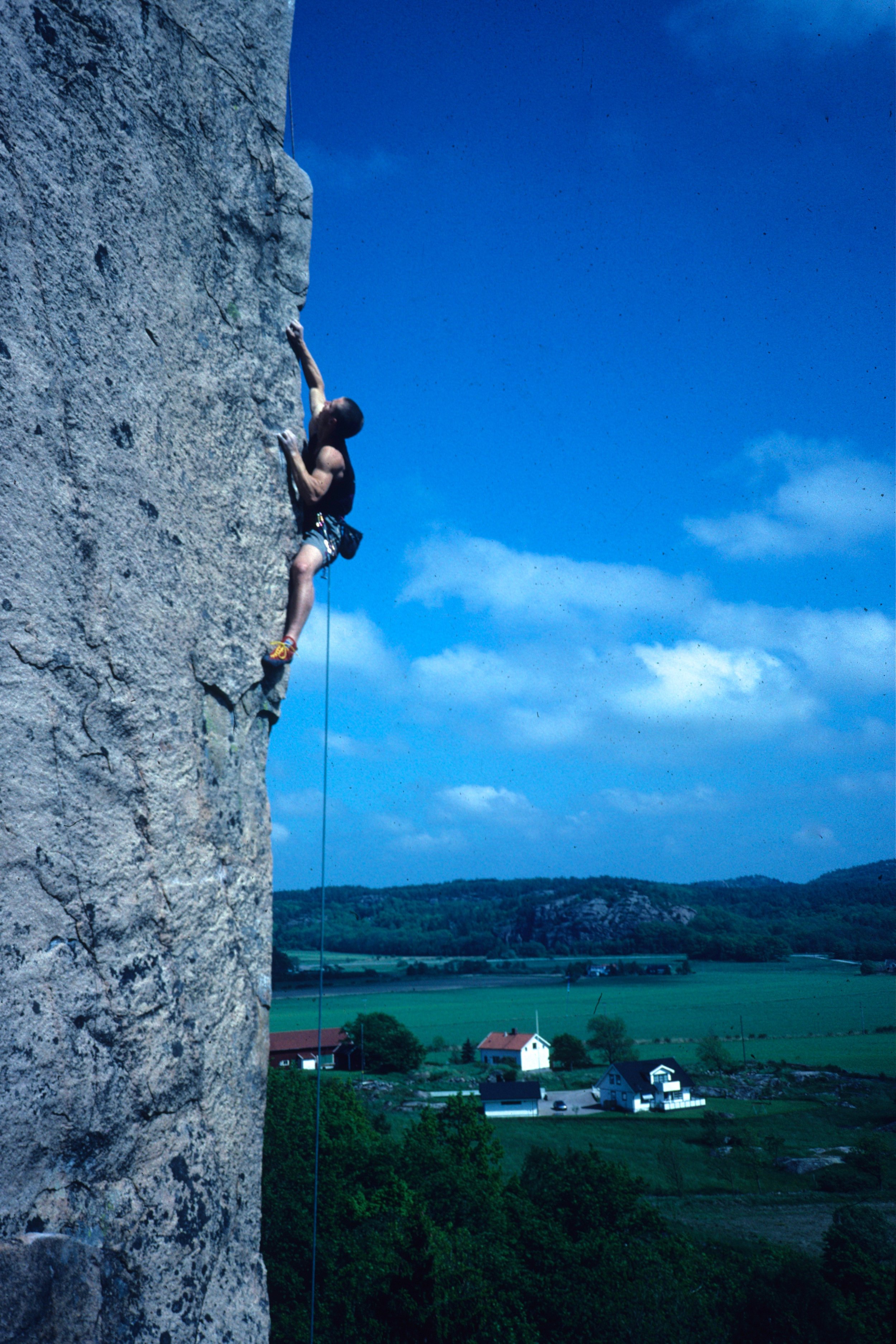Selected Repeats
This section contains more info on some of Neil's favourite repeat ascents on rock and ice in the UK and overseas.
Falling from Equilibrium E10 7a, Burbage during the second ascent in 2002.
Photo: Mike Robertson
Equilibrium E10 7a Burbage, UK, 2nd ascent in 2002
As seen in the film of the same name, Equilibrium was first climbed by Neil Bentley in 1999. It was regarded at the time as the hardest route on gritstone and it held this title for the subsequent fifteen years. It took me a year of specific training and mental preparation to do this climb, along with some exceptionally close-shave, ground-sweeping falls! The belayer needs to run back to save a fall from the first half of the route and a fall from the top section would almost certainly be unsalvageable.
Meshuga E9 6c, Black Rocks, UK. Second ascent in 2000.
Photo: Ray Wood
Meshuga E9 6c Black Rocks, UK, 2nd ascent in 2000
Immortalised by the video, Hard Grit, Seb Grieve's ascent of Meshuga horrified viewers all over the World and was regarded as the benchmark in gritstone boldness. My first attempt to repeat the climb resulted in a horrendous ground fall from which I sustained a head injury. My decision to return and repeat Meshuga was one of the toughest of my life, but its routes like this that you always remember.
Abseiling down to check the protection on Indian Face E9 6c, prior to making the third ascent in 1996.
Photo: Gresham collection
Indian Face, E9 6c Cloggy, UK, 3rd ascent in 1996
Rock climbing so rarely makes national news headlines, but when Johnny Dawes climbed 'the line' on Clogwyn d'ur Arddu in 1985, it completely re-shaped the face of British climbing. This 150ft high and virtually un-protected slab route remained unrepeated for over a decade and gained a reputation as being untouchable. It took the vision and persuasive powers of Nick Dixon to tempt me to try the route with him and we both fell under its spell and ended up making ascents within a week of each other. It had all gone so smoothly on a top-rope but I lost all semblance of control on the lead and this was without doubt, the most scared I've ever been! I attempted to keep my ascent of Indian Face secret from my parents but didn't quite manage it!









